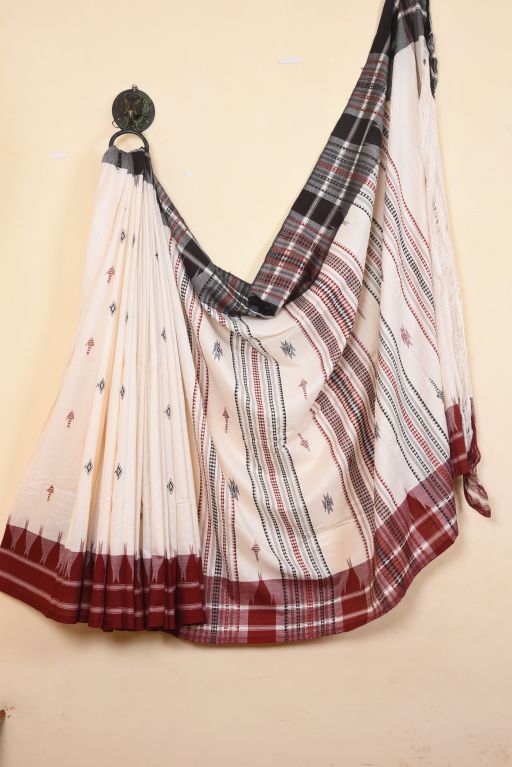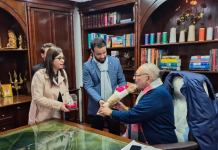Bhubaneswar: Saree is considered the traditional and most elegant attire for women in our country. It gives an additional beauty and grace to the woman. A woman becomes more beautiful through her various types of wears among them saree keeps a special place. Probably saree is such wear which convincing increases the beauty of every woman. As in India, most women wear sarees, so different states in our country produce their special handloom fabrics, especially handbook sarees. To think of it, Odisha handloom sarees are one of the most loved sarees as per their quality of fabrics and ethnicity. But when talking about Odisha handloom sarees, there are different types of handlooms produced in various districts of Odisha. Yet, in totality, Odisha handloom sarees have acquired a special place in people’s hearts not just within the country but across the world. Among all others, Koraput sarees have a special status.
Kotapada is a city located around 80 k.m. away from the Koraput district. In the Kotapada locality, there are Dongariguda and Bhonguli panchayats where these handloom sarees are made since time immemorial. These sarees are famous in the name of Kotapada sarees, are supplied within the country and even abroad.
The artisans, here, have made a reputation for themselves in the state as well as in the country by retaining their craftsmanship from generations. The Department of Handloom Weaving Industry of the state government in the year 1956 had given the status to the Kotapada or Mirigana sarees and also have been helping in its selling, which is why these sarees are being exhibited in various fairs and exhibitions in the country and also getting exported. As a result, the artisans are getting rewarded both nationally and internationally. Senior artisan Gobardhan Panika has been awarded Padmasree.
The process of Making this Saree:
For weaving Kotapada Saree cotton threads are obtained as raw materials from the district of Baragada and tasar threads are obtained from the neighbouring state Chhattisgarh. The threads are properly furnished first and then the preparation of colouring is started. To prepare the colour, there are many kinds of natural ingredients are gathered. Among various types of natural ingredients like roots of the Al trees, cow dung, castor oil, Harada and Canada, iron rusts, ash etc. are required for colouring the threads. Al trees are found in Kalahandi, as per the artisans. At first, the skin of the Al tree roots is dried and powdered by grinding it manually. For one bundle of thread, 4.5 k.gs of Al powder is required. Then this bundle of threads is divided into ten parts. This is soaked for one whole day in a big vessel. Then 5 k.gs of castor oil is boiled. After spreading the threads this oil is poured on it. After it is slightly cooled down, the threads are properly kneaded. After that, both sides of the thread is coated with cow dung. Then the threads are dried. After that, the ashes of the wood are properly boiled in water. The threads are again kneaded by getting sprinkled with this ash water and then dried once again. This process is repeated twice a day for fifteen days. After fifteen days the threads are washed in clean water. Then after dividing the bundle into ten parts the bundles are put in boiled water separately in ten vessels. Then Al powder is added to it and is stirred with a stick. The threads are dipped in this water the whole day. The next day it is again boiled for one hour and then rinsed in clean water. This process of boiling and washing and drying of the threads will continue for 4-5 consecutive days. After the threads are completely ready and coloured then weaving is started. To finish weaving one single saree takes a minimum of one month. It only reflects the hard work, dedication and authenticity of the artisans. This explains why sarees are so rare and precious.
-OdishaAge




















